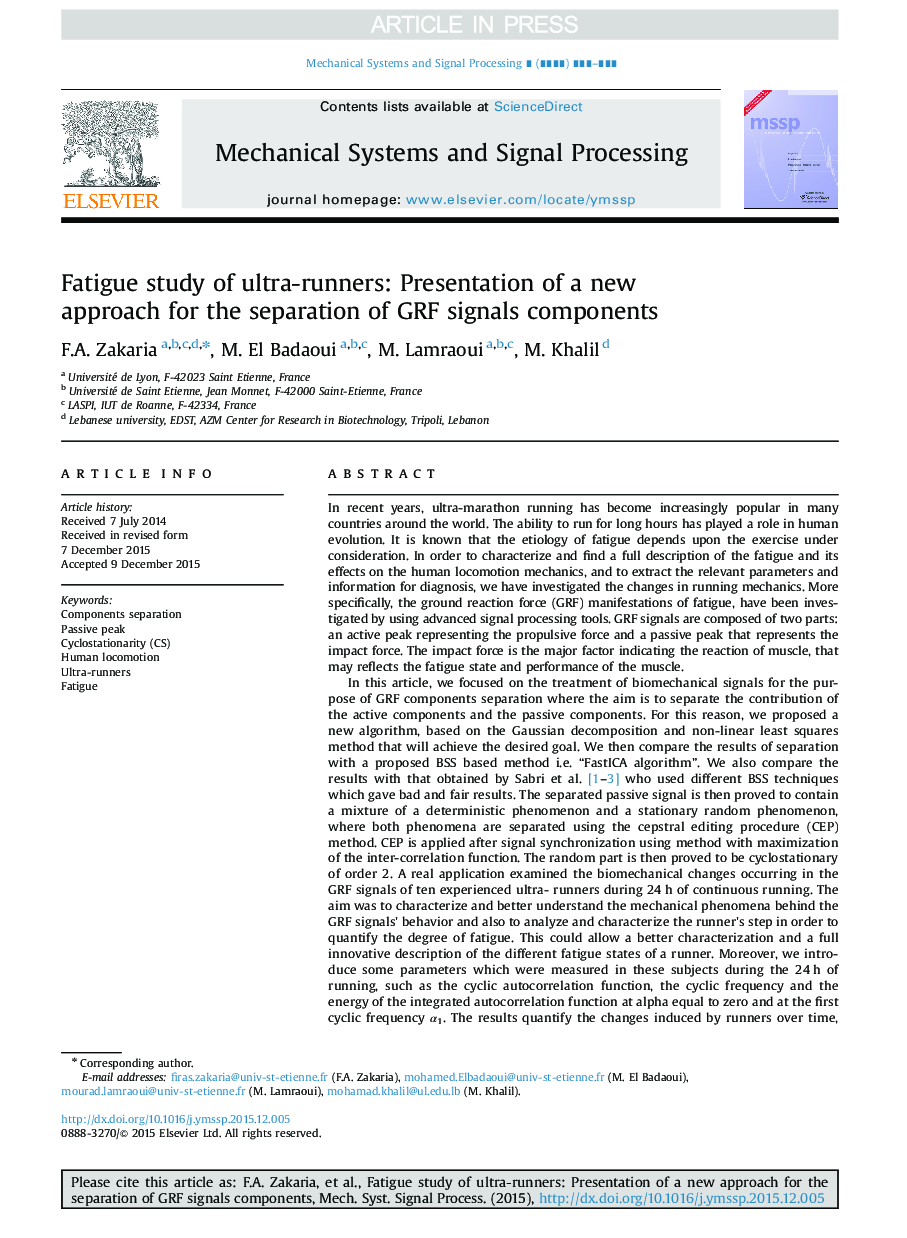| Article ID | Journal | Published Year | Pages | File Type |
|---|---|---|---|---|
| 6955292 | Mechanical Systems and Signal Processing | 2016 | 20 Pages |
Abstract
In this article, we focused on the treatment of biomechanical signals for the purpose of GRF components separation where the aim is to separate the contribution of the active components and the passive components. For this reason, we proposed a new algorithm, based on the Gaussian decomposition and non-linear least squares method that will achieve the desired goal. We then compare the results of separation with a proposed BSS based method i.e. “FastICA algorithm”. We also compare the results with that obtained by Sabri et al. [1], [2], [3] who used different BSS techniques which gave bad and fair results. The separated passive signal is then proved to contain a mixture of a deterministic phenomenon and a stationary random phenomenon, where both phenomena are separated using the cepstral editing procedure (CEP) method. CEP is applied after signal synchronization using method with maximization of the inter-correlation function. The random part is then proved to be cyclostationary of order 2. A real application examined the biomechanical changes occurring in the GRF signals of ten experienced ultra- runners during 24 h of continuous running. The aim was to characterize and better understand the mechanical phenomena behind the GRF signals׳ behavior and also to analyze and characterize the runner׳s step in order to quantify the degree of fatigue. This could allow a better characterization and a full innovative description of the different fatigue states of a runner. Moreover, we introduce some parameters which were measured in these subjects during the 24 h of running, such as the cyclic autocorrelation function, the cyclic frequency and the energy of the integrated autocorrelation function at alpha equal to zero and at the first cyclic frequency α1. The results quantify the changes induced by runners over time, where after an extreme ultra-long duration of running, could lead to significant insights into the evolution of fatigue.
Related Topics
Physical Sciences and Engineering
Computer Science
Signal Processing
Authors
F.A. Zakaria, M. El Badaoui, M. Lamraoui, M. Khalil,
